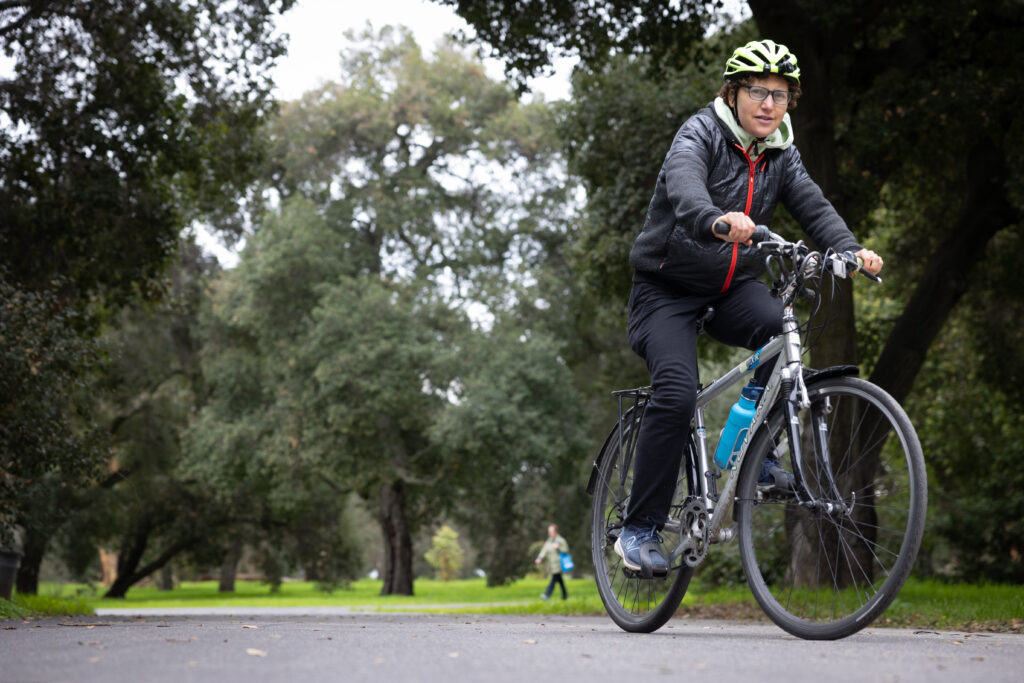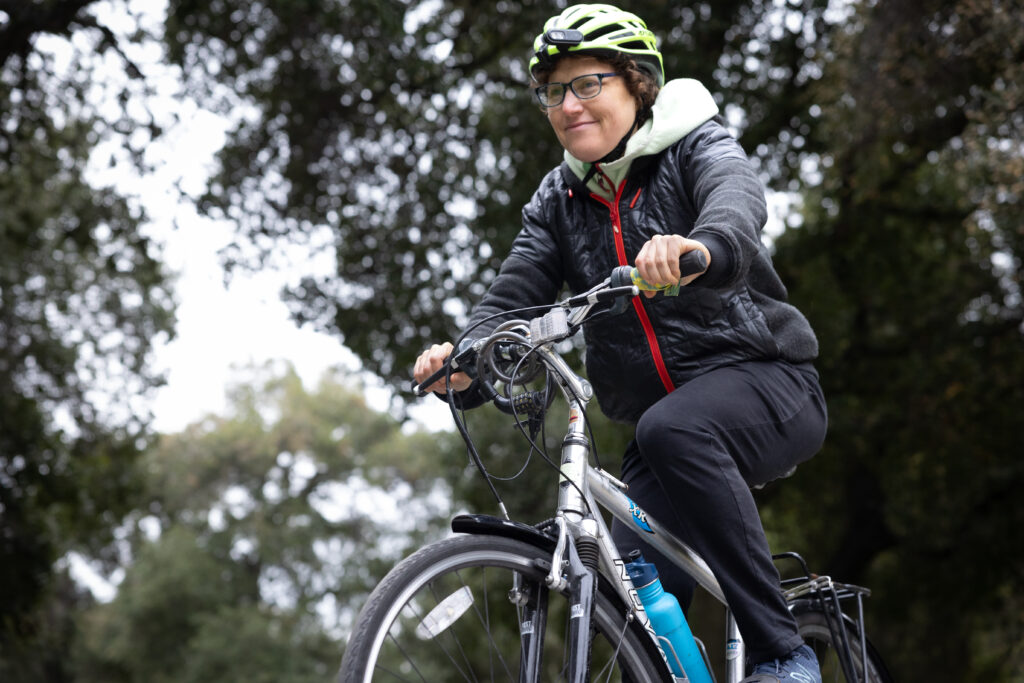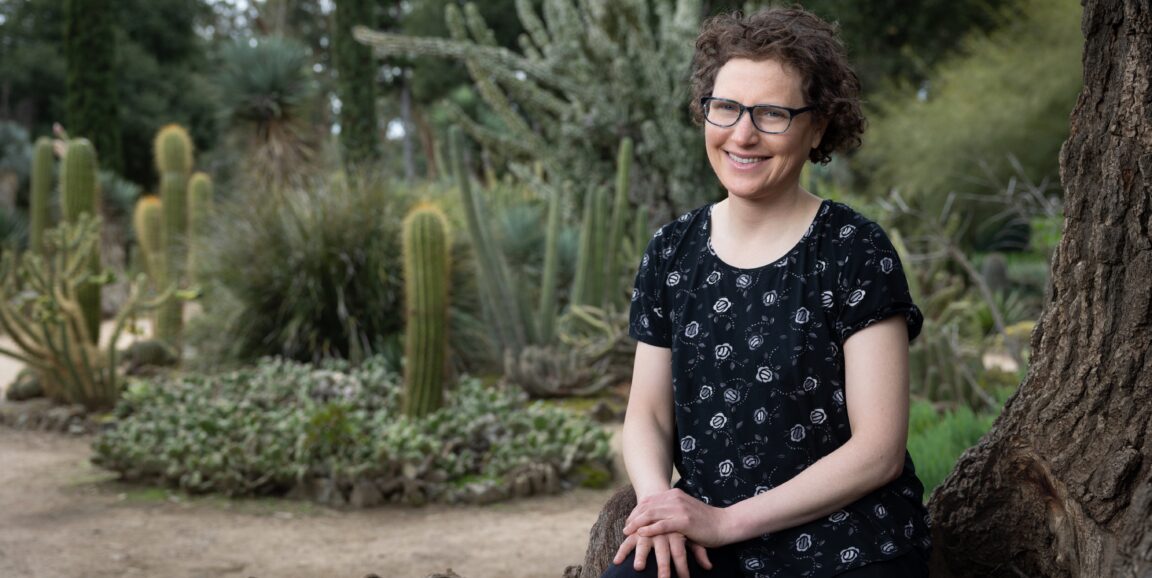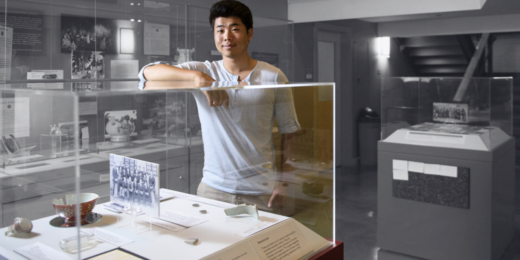These are stories of Stanford Medicine faculty, researchers and physicians whose journeys into medicine didn't take the traditional path.
Julia Salzman loves the natural world. In fact, she hasn't driven a car in 20 years. She cycles everywhere, admiring the plant life in Palo Alto with her three kids.
Her fascination with nature's inner workings began early. In high school, Salzman, PhD, now an associate professor of biomedical data science and biochemistry at Stanford Medicine, modeled pathways in the human brain and decided to study neuroscience.
But in college, as she probed neurons in petri dishes, Salzman began to feel confined. She didn't just want to study the brain; she wanted to study everything.
"With math, I could," Salzman said. People told her, "If you do statistics, you can do anything."
That's exactly what she did. Her first career was as a statistician, but she yearned to apply her training to the living world.
"I've always felt like following my passion is what I need to do," Salzman said, before considering another reason. "Maybe I'm stupid enough to take risks."
Fueled by a deep interest in science, she returned to biology at age 28. Salzman has since married her two areas of expertise to design a new form of genomics analysis that breaks the traditional mold.
I've always felt like following my passion is what I need to do. ... Maybe I'm stupid enough to take risks.
Julia Salzman

Nature calls
Salzman earned her PhD in statistics from Stanford University, then taught the subject at Columbia University, where she was a professor for one year. But as she rose through the ranks in academia, Salzman felt the natural world calling her back. She wanted to answer big questions in biology, such as how cells communicate, pathogens evolve and immune systems function. And she couldn't do that as a statistics professor.
She returned to Stanford University in 2008 to work as a post-doctoral researcher in a biochemistry lab, intending to learn biology and use statistical algorithms to study how to "read" the DNA instructions for life.
"At the time, people were saying: Aren't you scared? You have a faculty position. Why are you going to do a post-doc?" Salzman said.
This time, she didn't take others' advice -- and it paid off. "I didn't feel scared because I knew it was what I wanted to do with my life and it fascinated me," she said.
In the biochemistry lab of Patrick Brown, MD, PhD, now an emeritus professor of biochemistry at Stanford Medicine, she learned how to sequence DNA and associated molecular biology.
"I got to learn genomics and genomic data analysis when the field was basically being born," Salzman said. "I was passionate about the human health implications."
Since then, Salzman has studied genomics for more than 10 years. Scientists like her analyze the human genome to understand disease. They do so by parsing a person's entire genetic catalog to understand which mutations might lead to a problematic health condition.
Since the early 2000s, scientists have analyzed genetic data by comparing it to an idealistic genome. Salzman became well versed in this method. And then wondered if there was a better way. Perhaps one that could generalize to essentially any living organism or virus.
I got to learn genomics and genomic data analysis when the field was basically being born.
Julia Salzman

An idealistic genome
The standard way to detect variation in an organism's genetic make-up is to compare it to a something called a reference genome. The reference serves as a prototypical member of that species, representing average genetic instructions. Any difference between the organism and the reference genome could explain a biological condition.
For example, if a breast cancer patient has a gene mutation that doesn't exist in the same location in the reference genome, that mutation could be the culprit behind the cancer.
But the human reference genome has a problem: It's made up of genomes predominately from people with European ancestry. Because those people generally have DNA sequences that are well matched to the reference genome, a variation is a real flag that something's amiss.
That's not the case for people from under-sampled populations. The natural variation in their healthy genomes isn't captured, so scientists don't know what's typical and what's not - a problem that can exacerbate health disparities.
"The reference doesn't represent the biological variation that we know exists," Salzman said.
There are other drawbacks. Outside of humans, most species don't have reference genomes -- particularly, plants, bacteria and viruses. That makes it difficult or impossible to study mutating viruses that could harm humans, or plants that could heal us, Salzman said.
During the pandemic, a solution to these problems began brewing in Salzman's mind. Locked down with three young kids, she spent less time in the lab. Her statistics background crept back in.
"I thought, 'Is there a unified approach to understanding genomic variation in nature?'" Salzman said.
I thought, 'Is there a unified approach to understanding genomic variation in nature?'
Julia Salzman
A reference-free solution
It was a big question. But, Salzman said: "I believe in trying." Her first step was to ditch the reference genomes.
"I tried to step back and ask if they're needed. I couldn't convince myself they were," she said.
Salzman devised a simple statistical algorithm that could analyze raw genetic sequencing data without a reference. The model, called SPLASH (Statistically Primary aLignment Agnostic Sequence Homing), relies on a statistical test to detect variation between genomes. It ranks the variants based on how common they are in the group of genomes, reasoning that the less common variants are more likely to be biologically important.
With SPLASH, scientists could spot statistically significant differences in their samples more quickly and efficiently than mapping to a reference genome.
"Because SPLASH is so much more efficient, we can scale it in a way that it's impossible with other approaches," Salzman said.
Salzman and colleagues recently debuted the algorithm in a study published Dec. 7 of 2023 in Cell. In the study, they showed SPLASH could detect whether a SARS-CoV-2 nasal swab sample contained the Omicron or Delta sequence. The ability to detect such differences could help scientists flag new strains in the future, Salzman said.
The authors also demonstrated that SPLASH could spot genetic variations in organisms whose reference genome is incomplete or non-existent, like octopuses.
I think SPLASH is a first step to many completely new unifying, functional discoveries with genomic data.
Julia Salzman

"I think SPLASH is a first step to many completely new unifying, functional discoveries with genomic data," Salzman said.
It could help scientists understand how bacteria genomes become resistant to antibiotics, by flagging mobile parts of their genome that evade treatment and can't be captured by a reference. SPLASH could also take a global population of human genomes and flag variants that are likely disease linked, rather than healthy remnants of ancestry, because those would likely exist in multiple people in the sample. It also could help scientists understand how species adapt to climate change, Salzman said.
"I hope that SPLASH and its descendants will allow people to attack problems in global health more generally, without being limited to very specific problems," Salzman said.
After all, she's never been one to stick to a single puzzle or path. With her new tool, she hopes scientists like her younger self won't have to either as they search to find their true passions within so many possible areas of study.
"Marrying statistics theory with biological function," Salzman said, "I'm fascinated by what I do now."
Go here for more stories from our Unconventional Paths series.
Main image: Jim Gensheimer






